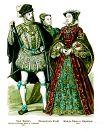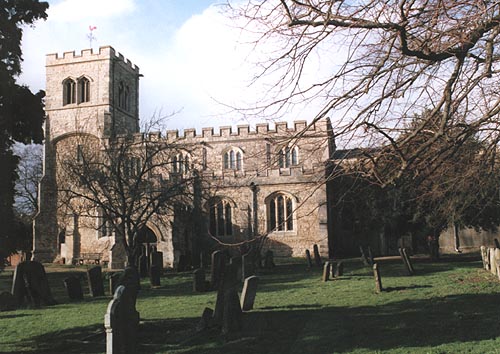|
|
||
| JOHN BARRATT Circa 1588 - 1661 | ||
| John
Barratt was born about 1588, the year of the Spanish Armada.
He was the eldest son of John Barratt
of Cranfield. It is not known who his mother was, as the
parish Registers for Cranfield do not survive before 1600. It
is known that he was the eldest son as he is so described in his
father's Will. He had six younger brothers and a
sister. His father was probably a small farmer and was
reasonably well-off.
When John was about 25, he married on the 21st of September 1613 Elizabeth Shelshye at Cranfield Parish Church.
Their first child, a daughter named Dorothy, was baptised at Cranfield on 23rd October 1614. Two years later on the 6th of October 1614, their second child and eldest son was baptised, he was named Stephen. Another son, Thomas, was baptised on the 4th of November 1620 and their fourth and last children, Elizabeth, was baptised on the 16th of July 1624. this completed their little family and they were lucky in that all their children survived infancy and grew up to marry and have children. John Barratt is described as a labourer in his Will but he seems to have been rather more than a labourer working for other mean and was probably a husbandman or small farmer. He was sufficiently well educated to be the Parish Clerk in 1627 and held the post for over 30 years until his death.
|
By
1634, he was living at Cranfield in a house owned by his father, John
Barratt. His father, being about 74 years of age and a
widower, possibly lived with him.
Their children were now grown. Dorothy was the first to marry. Her husband was Robert Lawton and they were married at Cranfield on the 28th of September 1635. Stephen married twice, first Ann and after her death to Joan ?. Thomas married and went to live at North Crawley, Buckinghamshire, not very far away as this was the adjoining parish to Cranfield. Elizabeth married about 1646, her husband's surname was Wheeler. In 1642, the English Civil War began. No battles were fought in Bedfordshire but it was an unsettled time for all. On the 30th of January 1649, the King, Charles I, was beheaded in London and on the 19th of May, the Commonwealth was declared. One effect of the religious turmoil of the time was that sometimes a vicar was appointed with whose religious views the parishioners did not agree. This may explain why on the list of vicars of the church it states "1652 Thomas Jenkin Bowen. (intruded).". On the 17th of October 1644, John Barratt's father, John Barratt, senior was buried at Cranfield. His father left him "my house wherein he now dwelleth with the milke house & buttery adjoyninge tot he said house with a parcell of ground from the milke house dore to the buttery end". It is not certain whether this is the same house as John Barratt mentioned in his own Will 13 years later as "my messuage or tenement in Towne End wherein I now live with the yard & all buildings thereunto belonginge". This included "one bay of buildings used as a Smythie Forge.....with the apputenances & and one slipe of ground adjoyninge to the west side therof contayning one poole & halfe". This building is believed to be the cottage shown below, which is now No. 43 High Street, Cranfield. |
|
 THE BARRATT FAMILY
THE BARRATT FAMILY